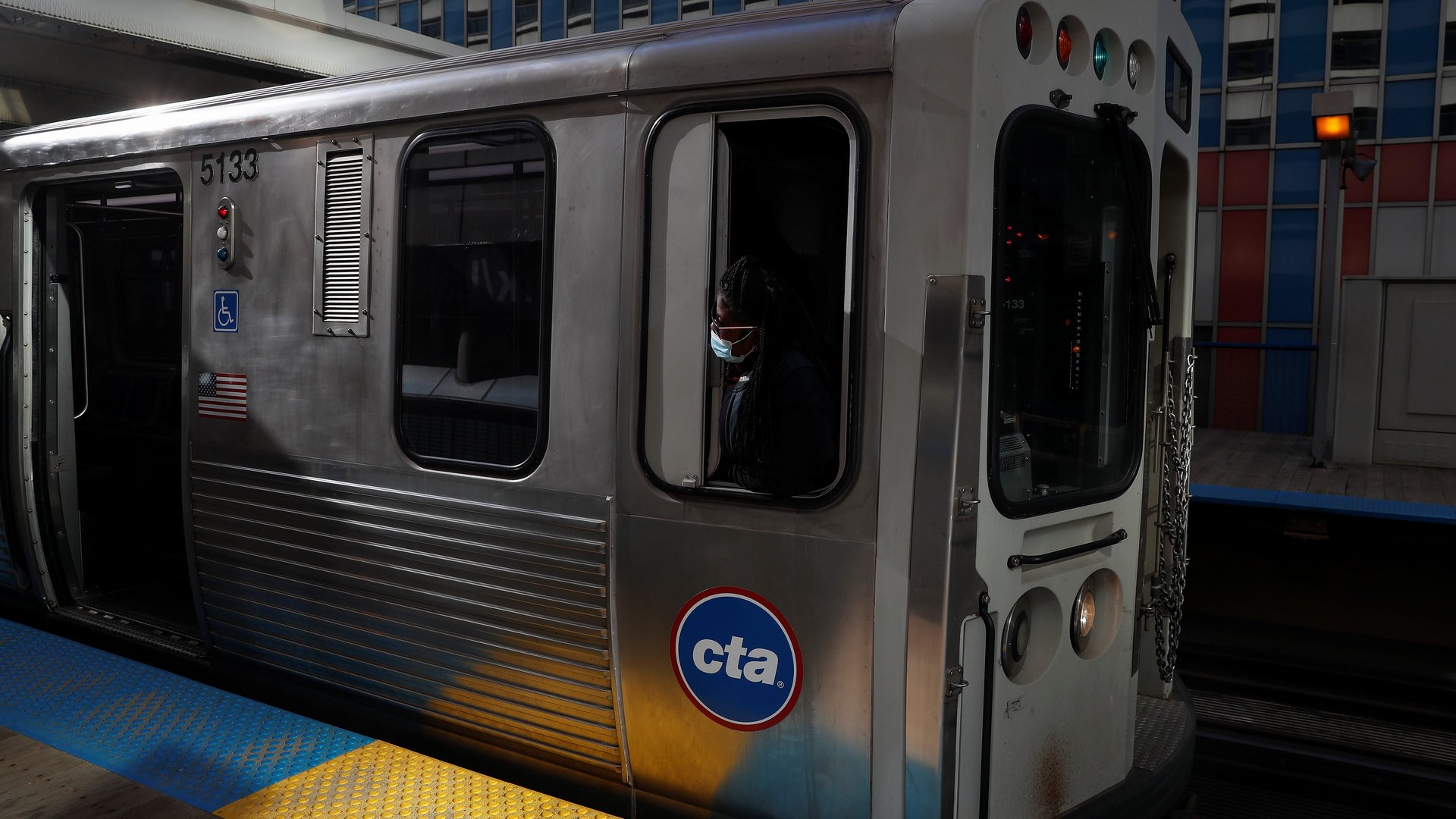Uber and Lyft are not the public-transit partners they hoped to be
Ride-share companies like Uber and Lyft have taken pains to position themselves as a partner to public transit, providing a last-mile solution to get people to places where train and bus routes don’t go.


Ride-share companies like Uber and Lyft have taken pains to position themselves as a partner to public transit, providing a last-mile solution to get people to places where train and bus routes don’t go.
But a Nov. 8 paper in the Journal of Transport Geography analyzing ride-share trip data in Chicago shows that before and during the pandemic, people rarely use public transit in conjunction with ride-shares.
The authors studied the relationship between public transportation and ride-sharing services in Chicago. Measuring ride-share data from before the covid-19 pandemic, researchers found that nearly half of trips taken were substitutes journeys they could have taken using public transit, while only 2% of trips were “complementary,” taken to or from public transit stops. (The remaining portion of trips were taken in areas without transit options.) But riders, especially those in white, wealthy parts of the city that are well served by public transportation, still opted for ride-shares.
Despite efforts by ride-share companies like Lyft and Uber to partner with local transit systems to fill in gaps in transportation networks, this study suggests in practice, they function more like competitors.
Ride-shares as complement and competitor
Multiple studies have linked the arrival of ride-share companies to a decrease in bus and light rail ridership, but from the start, Uber and Lyft have both insisted that they are a natural complement to public transit. In February of 2021, Uber’s head of strategy and planning Ivan Mihov told Quartz, “We start to see a future where public transportation is much more of a public-private partnership, but agencies are the ones with that in control. We’re just improving their tool box.”
Both companies have formed partnerships with local transit authorities to integrate ride-shares into trip planner platforms alongside rail and buses, and offer subsidized ride programs to connect people from their homes to transit stops. Lyft reports that in October of 2021, 40,000 people in Chicago made use of the integrated transit planner function in its app. Uber has partnerships with hundreds of transit agencies in the US, and recently started a pilot program in Berlin and Munich to offer flat-fee rides from U-Bahn terminals.
But ride-share companies have found themselves competing in some cases with established transit networks for riders since hitting cities in the early 2010s. One 2019 study (pdf) of transit ridership patterns in 25 North American cities estimated that for each year after a ride-share service enters a new market, heavy rail ridership decreases by 1.3% and bus ridership decreases by 1.7%
The latest ride-hailing study in Chicago reveals transit’s lack of coverage and lack of convenience. Roughly half of the time people chose ride-shares, no comparable public transit option existed. When riders chose ride-sharing over public transit, it was most often in downtown with a range of bus and rail options. Ride-share substitution was especially high during peak hours, indicating that work commuters opt for ride-shares when trains and buses are overcrowded or don’t come frequently enough.
Making public transit a viable option
Because this study only looked at rider habits in one city, it’s difficult to say what it means for the relationship between transit and ride-shares everywhere.
Uber and Lyft both say that they are committed to being part of a larger network of transportation options for riders across cities. In a statement to Quartz, Lyft emphasized its work to help customers find transportation solutions across modes through its bike-share program and by integrating public transit schedules into its app. It also said that 53% of its riders in Chicago have used the service to get to public transportation.
In response to this study, an Uber spokesperson pointed to findings showing ride-share’s ability to serve areas where transit isn’t available, and called on the city of Chicago to expand transit offerings, saying that the study demonstrated “not only how Uber fills the gaps in public transit networks, but why Chicago should consider comprehensive road pricing to fully fund and expand transit access while reducing congestion.”
Ultimately, the work of making public transit a more appealing option to riders falls to public transit agencies. They’ll need to make new investments in rail and bus service to make it more frequent and reliable. Transit agencies looking to make improvements will get a boost from the $39 billion allocated for public transit in the recently-signed infrastructure bill.
A continued preference for ride-sharing spells bad news for efforts to reverse the supremacy of cars on city streets if the findings are replicated in other US cities and beyond. Cities that are taking steps to get more cars off the road to improve air quality and reduce carbon emissions are now having to tackle ride-shares as well as personal vehicles. Ride-shares already have a higher per-trip emissions impact than personal vehicles because of the time they spend driving between fares. Worldwide, public transit ridership in cities must double by 2030 in order to meet 1.5º warming targets, according to a new report released by C40 Cities and the International Transport Workers’ Federation during the COP26 conference.